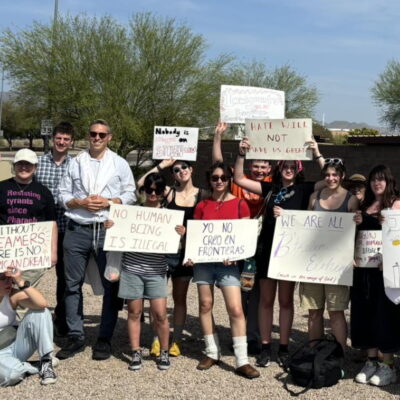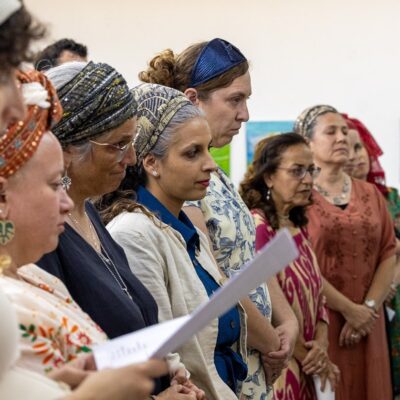If At First We Don’t Succeed:
Funder Lessons from Philanthropic Failure

By Ariella Saperstein
The Museum of Failure – likely the first of its kind – opened last year in Sweden. Through exhibits of circular cell phones, Betamax machines, and clear Pepsi, the museum celebrates innovations which never took off, and those who were brave enough to attempt them. Though the museum seems tongue in cheek, its director, Dr. Samuel West, argues that “if there’s anything we can do from these failures, [it] is [to] learn from them.” Perhaps if there were a similar honor for failed grants, philanthropy would be more forthcoming about its own mistakes. Yet instead, public discussions about mistakes and failures in grantmaking are still uncommon, and even private conversations rarely broach the subject, whether for fear of embarrassment or judgment.
As philanthropy in the United States continues to grow, so does the involvement of professionally staffed foundations. In 2016, Giving USA estimated that $390 billion was given to charitable causes, with foundation donations making up 15% ($59.28 billion) of this total. While private philanthropy has been responsible for phenomenal successes, it has also produced significant failures. A 2013 study by the Center for Effective Philanthropy found that 88% of nonprofit leaders want foundations to speak more publicly about such failures.
In a series of interviews with senior foundation professionals in the Jewish world, I discussed the factors on the foundation side that led to a grant’s failure to achieve its projected outcomes. Thirteen foundation professionals agreed to be interviewed, though more than half requested anonymity. In the interest of communicating the lessons funders can use to improve their grantmaking practices, below are some of the learnings shared by staff from their experiences. It will be noted that none of the lessons cited were particular to the Jewish aspect of the foundations’ grantmaking, but were rather more broadly applicable to philanthropy in general.
1. Know your market, your audience, and your grantee. When the Avi Chai Foundation attempted to create a version of Teach For America in Jewish day schools, it did not consider that most of the potential pool for teachers was religiously committed, and therefore subject to post-college pressures – such as marriage – which prevented them from moving to a far-flung location for two years, as their secular TFA peers had. Starting something new brings excitement and enthusiasm that should be shared by funder and grantee. However, these emotions can be tempered with data, market studies, needs assessments, and other relevant research needed to test the feasibility of an idea. Listening and adapting to the results can mean the difference between failure and success.
Finding the right partner is also essential for funders launching their own initiative. As was revealed by several staff interviewed, pilots will fail if an individual or grantee is enlisted who does not possess the same vision, as well as skills needed to execute it.
2. Conversations with all relevant staff who will be part of the grant’s execution are critical. More than any other factor, over half of the foundations interviewed identified personnel challenges as one cause in a grant’s failure to meet its goals. It was rare for a funder to blame the grantee, however; more frequently, they blamed themselves. In several cases, foundation staff believed they erred by developing a project only with the grantee’s leadership. Failing to involve key staff leaves a funder vulnerable to not understanding the full picture of what is involved to achieve necessary goals, and foregoes a relationship with the individual(s) most integral to making the project a success.
Anticipate personnel changes that may happen over the course of the grant, especially in time-limited or contracted positions, such as in academia. After encountering an unexpected leadership change at a university, one foundation began structuring its grant agreements so that they were not contingent on particular personnel, and require a grantee to notify them in advance of any upcoming staff changes.
3. Clarity from the outset about measurable goals and expectations is important for both funders and grantees. Although this lesson may appear obvious, every project does not lend itself easily to metrics and specific outcomes, and funders must challenge themselves to identify the milestones and results that will make a project a success in an appropriate timeframe.
One foundation discovered, to its surprise, that the number of people served during the first year of a grant was much lower than it desired, but the grantee considered the number a success, as metrics had never been discussed. Consider what will happen if a grantee cannot meet certain benchmarks, what additional support a funder is willing to offer, and at what point it may be necessary to pull the plug. Budgeting for evaluation (ideally by an external entity) can help a grantee who may not otherwise have the resources to commit to it.
4. Beware the risks of driving a project forward as a single funder, considering the repercussions for its sustainability. One foundation interviewed saw a need to engage alumni of service organizations, and attempted to create an umbrella effort to address this gap. The particulars of merging participants, staff, supervision, and cultures, however, proved challenging, and the lift of combining efforts ultimately did not yield the value hoped for by the funder. While foundation professionals benefit from a bird’s eye view of an issue, and often see opportunities for and want to encourage partnerships among grantees, one foundation director concluded that, while incentives and support from funders can help ensure success, it works best if it happens organically, with authentic buy-in and commitment from relevant partners.
Yet just as important as foundation-grantee synergy is the ability to bring on other funders, from the outset or further down the road when a project is more fully developed. As even the largest funders found, it is impossible to sustain and scale a new idea alone forever.
Maintaining humility, even when driving one’s own idea, means acknowledging one’s own shortcomings and what expertise individual funders lack.
5. Don’t bypass due diligence, not just on the grantee but on its claims and assumptions regarding outcomes. One funder acknowledged that, having previously worked successfully with a grantee, it was less inclined to examine objectively the organization’s false assumptions that ultimately led to the failure of a new undertaking.
Imagine that the family of a sick child asks you – as it did one major philanthropist – to support efforts that could have prevented his illness. No doubt many of us can sympathize with the two foundation professionals who observed that they made mistakes because they let altruism and the vision of helping others in dire circumstances cloud the critical thinking that usually governs their work.
6. Communicate and offer feedback around successes and challenges. Nearly all foundation professionals interviewed discussed offering feedback to a grantee over the course of a grant, especially when things were not going well. They were clear about warning when funding might be discontinued, so that grantees were not surprised if a project was wound down.
Encouraging open grantee communication in the other direction is equally important, especially in complex projects where funders and grantees must work together to ensure that progress is made against challenges that inevitably arise.
7. Take smart risks. Strategic risk taking in philanthropy should be nourished, particularly among foundations with significant resources. As with investing, it is often necessary to take big risks in order to maximize impact and change in a field. Risk analysis should take into account the above described factors, as well as an assessment of potential unintended consequences.
Businessman and philanthropist Charles Bronfman has spoken about an investment of $19 million over six years to increase trips for young Jews to Israel, which failed to move the needle. The lessons learned from this endeavor, however, ultimately led to the creation of Birthright Israel, which has brought over 600,000 young Jewish adults to Israel since 1999.
Foundations should embrace the opportunity for informed risk taking, as few others can. Ironically, however, risk-taking can require flexibility around some of the very things foundation professionals demand from prospective grantees, such as a proven track record, longitudinal data, or a proposal that fits squarely into a well-defined philanthropic strategy.
8. Sharing mistakes and lessons learned enables others to benefit from the experience.
With risk, inevitably comes some failure, yet only a minority of foundations surveyed had shared the experience of a project that failed with others in the philanthropic or nonprofit community, much less the general public. As became clear in collecting their experiences together, however, some of the same mistakes were made – and lessons learned – by funders independently, including those who are already in touch about other things. While it is often important that we test ideas for ourselves – and make the mistakes that accompany them – more open sharing can only help others avoid some of the same pitfalls and improve their grantmaking strategies and outcomes as a result. In addition, it can help grantees better understand how foundations operate, and how they can work effectively together.
While certain funders expressed concern about protecting grantees, there is still a reticence to admit mistakes even with peers, much less with a broader audience. Other factors influence this hesitation, including fear of the appearance that money has been wasted, or more general embarrassment (especially for trustees). Indeed, openness about failure is also necessary between trustees and foundation staff, who may be inclined to airbrush challenges to their principals.
Of course, not every failure is an instructive one, but it is the responsibility of foundation professionals to look for the constructive lessons, as revealed by careful evaluation, and share the results. As UPenn Professor Peter Frumkin writes, “the costs of failing to document, communicate, and appreciate failed grants will surely prove more costly in the long run than any grantmaker now neglecting this task can possibly foresee.”
The Robert Wood Johnson Foundation posts on its website reports on completed grants, as well as evaluations, good and bad. In 2012, the Case Foundation launched its Be Fearless campaign, which allocated funding to encourage foundations to increase their risk-taking. Through conferences, grants, and publishing case studies, their goal is to “shed light on why failures are kept secret and what else hobbles experimentation.”
These are laudable efforts, but a drop in the bucket of major philanthropy. A call to other funders to pledge to join such examples could advance the field in a meaningful way. Yet without broader avenues to share the lessons learned, these endeavors are wasted. As foundations continue to embrace risk-taking, they would be well advised to commit similarly to evaluating and sharing the outcomes in more practical and public ways.
Ariella Saperstein is a Program Officer at Maimonides Fund.













